England’s Glorious Golf Coast
Britain’s south coast sees the purest sand beaches of the kind that great golf courses are built from
By Benny Teo
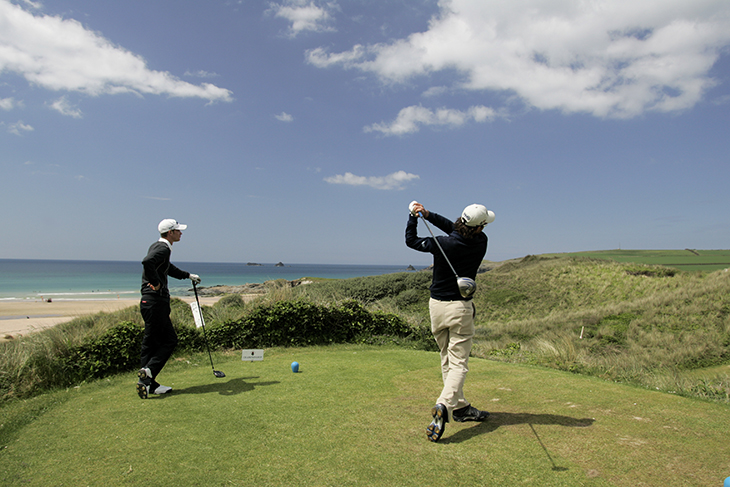
To golfers everywhere, the United Kingdom is where it all began, Scotland, at least. The fabled major championship courses that stretches from one craggy coast to the next has adorned our TV screens and imaginations for as long as we have hit that small white ball.
However, many do not know this, but further down south, in England’s South Coast are some of the most pristine beaches in the country, which then lends itself to naturally hosting some glorious golf links.
Approaching the top of this stretch is North Devon, with the world’s second oldest golf course – Royal North Devon no less – awaiting.
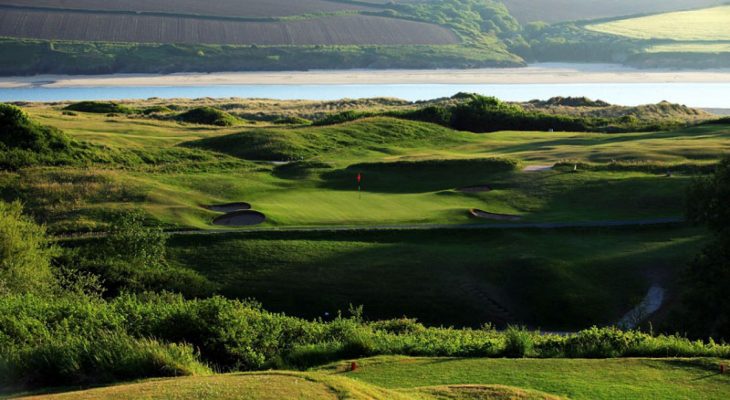
Just before arriving, I’d checked the weather, it was set fair for the week. Sunshine Central: Golf. Beaches. Surfing. The UK rarely offers itself up like this, and so it was a great opportunity to explore the coastal courses and experiences.
In no particular order, one may saunter upon these courses: St Enodoc; Trevose; Saunton; Burnham & Berrow and of course, Royal North Devon.
When you’ve been sitting in a car traveling for a while, you’ll get quite excited about the least thing, like being able to get out every now and then and actually stop cursing your ailing limbs. Our redemption was the ultimate relief – out of the car, into the pro shop and onto the first tee at North Devon.
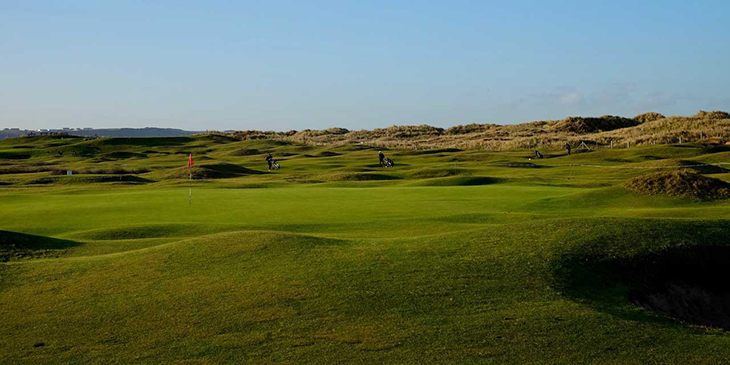
This place is unbelievable. It seems to be quite flat and at first glance, a bit featureless, but four holes in and you know you are in the midst of a cracking golf course. Today, we’re assured by the locals, the wind is benign. To you and I, it’s blowing mad but it doesn’t take very many hearty “Ahhaaaah? You think this is windy?” from the locals for us to realise today is a very good day to be playing RND.
This is commoners land and is pretty much run by the commoners. In this case sheep and wild horses. They are a wonderful feature of this golf course and you are never far away from blading a Pro V1 dangerously close to the forehead of a horse or chunking your Srixon Z-Star into foot-long sheep fur. Try playing from that lie.
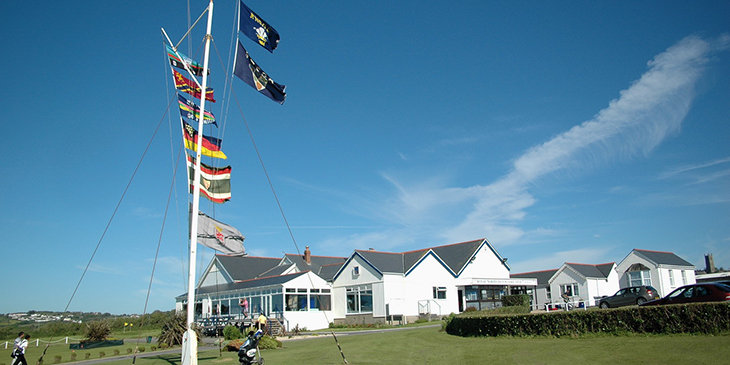
Royal North Devon Golf Club is the absolute master of understatement. When so many courses are tampering with land in order to get that ‘marquee’ moment, Royal North Devon thrives on its pure, unadulterated simplicity. Only St Andrews (circa 1547) is older than RND, which was established in 1864. This represents a gap of some 317 years between the world’s first and second golf courses.
Walking into the clubhouse at RND is like walking into a time warp. The place oozes history with its museum and there are more artefacts than you can shake a niblick at. But my favourite clubhouse feature is the name of Colonel Pine Coffin which adorns the Captains board since 1968. That was his real name and, to be honest, I really don’t know where to start with that one.
And so, to our shelter for the next two nights, Saunton Sands Hotel. We arrive as the sun is setting and the scene is quite simply stunning. The hotel is a large white art deco building set onto the cliffs at Saunton Sands. You can see it from the RND golf links which is over 10 miles away across the bay.
After checking in we walk down the stairs to the bar and a vast wall of glass, which looks out on Saunton Sands and three miles of pure white beach. Two or three times a year, the beach is cordoned off to allow military transport planes to practice take-offs and landings on sand. That’s how big it is!
As we stroll along, we see locals and tourists walk, swim and play, and the surfers kick back in a four-foot swell. Not surprisingly, the vast beach at Saunton Sands has been used as a location for many shoots over the years and it is where the music video for Robbie Williams’ ‘Angels’ was filmed. As we look out, there is indeed a large film crew hard at work eating bagels and looking important.
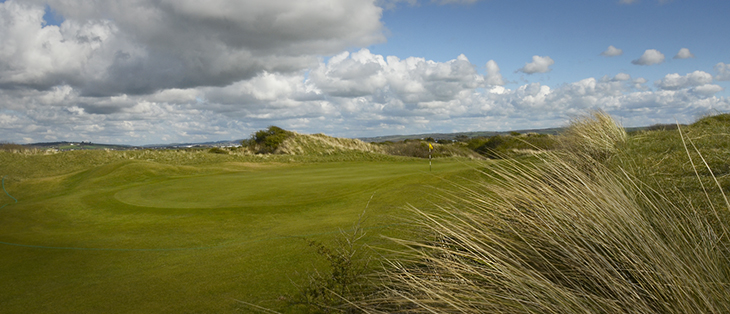
Set back from the beach is a vast expanse of dunes and grass. There is a golf course in there somewhere, Saunton Golf Course. But you can’t see it. It is completely camouflaged by itself. As we sip ice cool beers and gaze at the sun as it dissolves over the Atlantic, we wonder what glories will become of us in the morning when we venture forth onto the links.
The morning quickly came and it was our turn to have a go at Saunton Sands. When we arrive, we are immediately struck – not for the first or last time during this trip – by the sheer history of the place. First established in the 1890s and later updated by the legendary architect W. Herbert Taylor, Saunton Golf Club boasts two magnificent 18-hole courses (East & West). It wasn’t long before the greatest players in golf were clamouring to get a piece of the action. Exhibition matches involving Open Champions Harry Vardon, J.H. Taylor James Braid and a young Henry Cotton took place here in the 1920s and 1930s.
The course (we played the East) rolls through the dunes majestically and requires thought and imagination on every shot. The greens are immaculate and, despite some skirmishes on the fairways, we walk off very contented golfers.
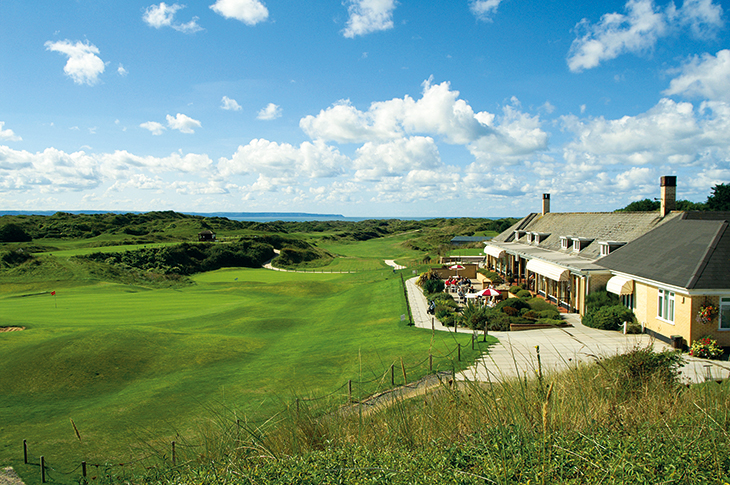
In the clubhouse we get talking to some locals. They assure us that, whilst the East Course is great, the West is even more interesting. Which can only mean one thing. We will have to come back.
Back at the hotel we retire to the bar in anticipation of dinner at the famous Saunton Sands restaurant. They’ve all had dinner here: Edward and Mrs Simpson; Sir Conan Doyle and Sir Ian Botham. We peek through to the curtains to see what’s what. The restaurant is dominated by two magnificent art deco chandeliers, and while the rest of the décor looks like it’s been designed by different people arguing over an interiors look-book, it’s undoubtedly a very fancy affair.
A hearty meal and several bottles of the finest whisky later and talk turns to tomorrow and St Enodoc. Like Saunton, a lot of people go all misty eyed when you talk about St Enodoc. Situated on the North Cornwall coast, the course overlooks the Camel Estuary, with the trendy seaside town Padstow on the far side, and to the North out across the Atlantic. Stunning sea views, we are assured, abound.
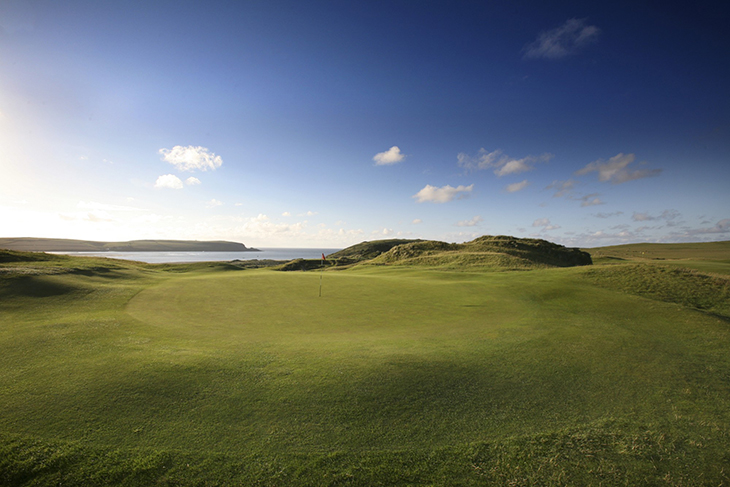
The club has two courses; the Church course is the James Braid designed championship course and then there is the shorter Holywell course which is an ideal course for those wanting slightly less of a challenge.
On the drive down we decided in no uncertain terms that we hadn’t come here to be insulted. Bring it on James Braid, do your worst!
An impressive line of famous players and royalty has played here over the years, including the Prince of Wales in 1927. But in terms of legacy, the place belongs to Poet Laureate, Sir John Betjeman. He even insisted on being buried here.
Betjeman had a lifelong love affair with Cornwall and wrote many poems about the area. Consequently, many of his fans made pilgrimages here (most of them taking up golf on his say so!). He had a house close to the 12th hole and was buried in the St Enodoc churchyard in 1984.
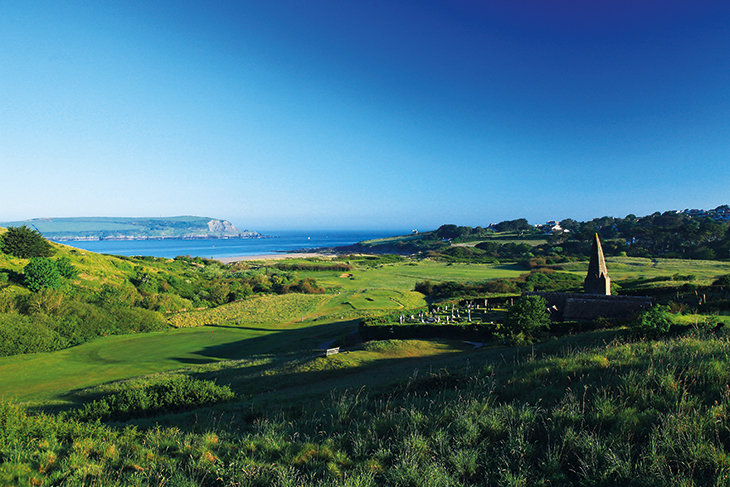
ROCK, CORNWALL – MAY 23: The view of the par 4, 10th green with par 3, 11th behind and the St Enodoc Church at the St Enodoc Golf Club, on May 22, in Rock, England. (Photo by David Cannon/Getty Images)
When you get to the 12th, you need to have a look around and find his grave. You can’t help thinking that Betjeman would have found great amusement in the fact that, as his coffin was carried the length of the 10th hole in driving rain, it was being followed by a cortège of the London literary press corps, dressed up like dandies and completely unprepared for the monsoon that descended on them.
Never one of the world’s great golfers, he was nevertheless made an Honorary Member of St Enodoc in 1977 and is renowned for his poem “Seaside Golf” which relates to the 13th hole:
“How straight it flew, how long it flew, it clear’d the rutty track. And soaring, disappeared from view, beyond the bunker’s back – A glorious, sailing, bounding drive, that made me glad I was alive. And down the fairway, far along, it glowed a lonely white; I played an iron sure and strong, and clipp’d it out of sight. And spite of grassy banks between, I knew I’d find it on the green.
And so I did. It lay content, two paces from the pin; A steady putt and then it went, oh, most securely in. The very turf rejoiced to see, that quite unprecedented three. Ah! Seaweed smells from sandy caves, and thyme and mist in whiffs. In-coming tide, Atlantic waves, slapping the sunny cliffs. Lark song and sea sounds in the air, and splendour, splendour everywhere.”
All hail the late Sir John Betjeman.
In fairness neither of us threatened to record many Betjeman Birdies at St Enodoc but we walked away with some priceless memories, not least the sixth hole. At 378-yards, it doesn’t appear to be the hardest par 4. But, after a semi-blind tee shot, if you are lucky enough to find the fairway, you are confronted by one of the largest bunkers in the world – the Himalayas. Any tee shot that ends up on the right side of the fairway will leave you the daunting task of launching your second high and true all the way over it to find the green.
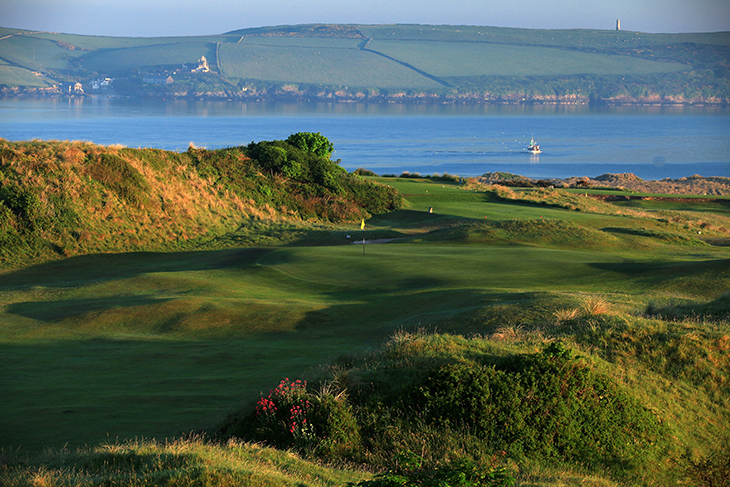
ROCK, CORNWALL – MAY 24: The approach to the green on the par 4, 1st hole at the St Enodoc Golf Club, on May 24, in Rock, England. (Photo by David Cannon/Getty Images)
The sea and estuary views that keep popping up at St Enodoc serve as a constant reminder that you are in true links land. The fact that we still have two great courses to experience on our Atlantic golf odyssey ensures that the post round pint tastes like nectar from the gods. Life is good. No, life is great.
An hour after walking off the 18th at St Enodoc, we arrive at Trevose Golf & Country Club to a warm welcome from the Gammon family. The Gammons are famous round these parts having been associated with the club for many years and they’ve put us up at the lovely apartments at the club. After a couple of medicinal drinks, we retire to bed. We are deliriously high on our links adventure.
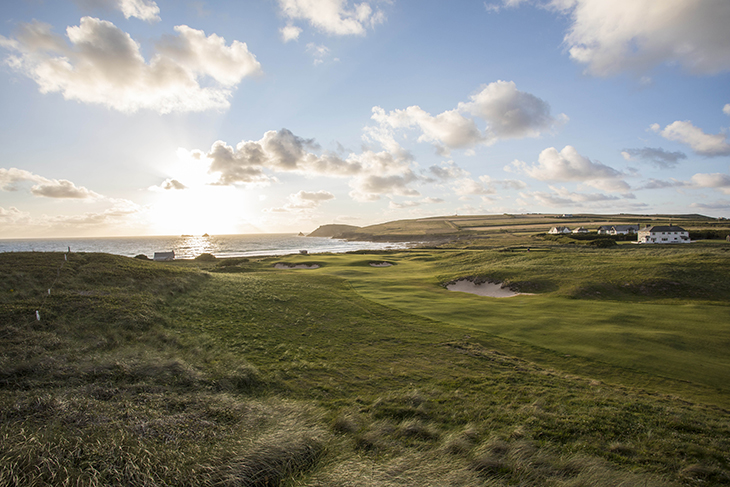
If there’s a golf hole that depicts the splendour of the Atlantic Coast more than the 4th at Trevose Golf & Country Club, I will gladly eat my hat and quite possibly gnaw the visor of yours. It is a staggering piece of good fortune that this golf hole exists, for it is the type of thing that gives good men inspiration to become great and bad men cause for serious reconsideration. It feels like you can reach out and touch the rollers that rise up and crash into the rocks and beach right next to you. It is pure golf drama and it made my stomach feel unusual when I first set eyes upon it.
The Championship course was designed by Harry S. Colt and he must have licked his lips when he first stood on top of the promontory on which the clubhouse was built and from where the land sweeps gloriously down away to the sea. This is real Cornwall country where little has changed for decades. Surfers cruise the rollers at adjacent Booby’s Bay, seabirds sing, wild flowers bloom in the hedgerows, and sandcastles crumble under the incoming tide.
The opening tee shot is a joy, with a nice wide fairway falling away below you and beckoning a solid, free-swinging drive. But don’t be fooled. There are many twists and turns to be found on this golf course and when the wind blows, you will do well to shoot within 10 shots of your handicap.
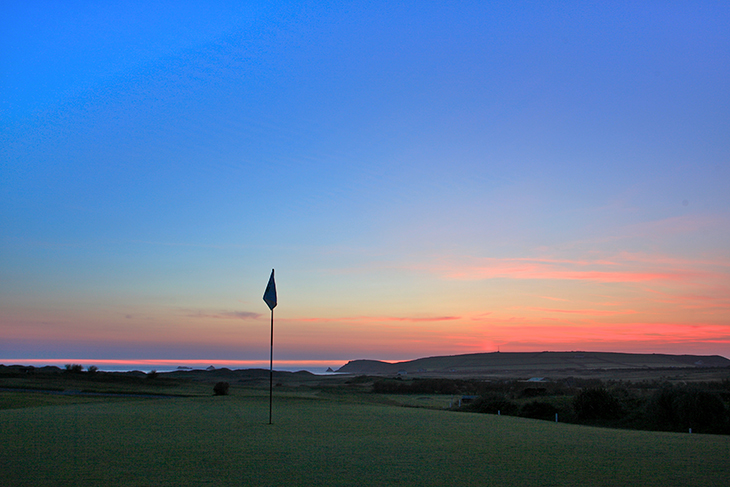
Trevose Golf & Country Club, Constantine Bay, Padstow, Cornwall, England (Picture Credit / Phil Inglis)
Trevose is one of my absolute favourite places in the UK. You really do feel tucked away from the world with only golf, surf and a well-stocked clubhouse bar to concern yourself with. No wonder so many Londoners are members there, and you’re as likely to bump into a TV presenter or other media type as the locals.
Then there’s the fantastic Short Course that is absolutely brilliant for taking young kids and beginners on. It’s a mini version of the real thing: really well laid out, always in good condition and a great way to brush up on your short game.
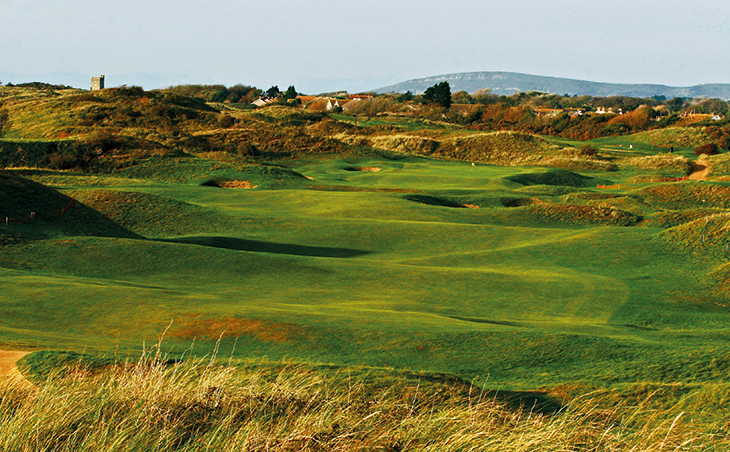
Burnham & Berrow GC
Burnham on Sea
Somerset
© Phil Inglis
Our morning drive takes us back up the coast from North Cornwall, through North Devon and into Somerset. We are heading to our last Atlantic golf outpost, Burnham & Berrow. I have to be honest and say I’d never heard of Burnham & Berrow and, in truth, after the glories of the previous four days, I wasn’t overly excited about our last port of call.
Well, Burnham & Berrow may not be the most famous of the Atlantic Coast courses but you’d be mad to miss it. There’s something reassuringly wild about B&B. Its undulating fairways and slightly overgrown areas of rough give you the sense of a very natural golf course. It is what it is, and it was built on ‘as you find us’ land.
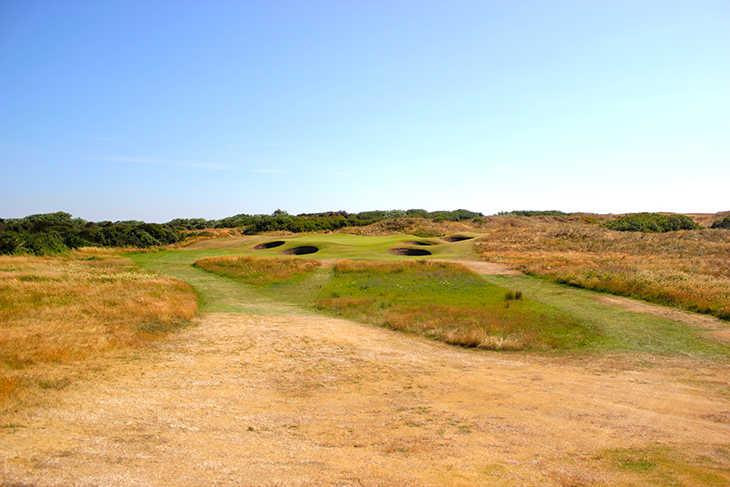
Opened in 1891, it was originally a 9-hole course laid out amongst the sand dunes of the Berrow Warren close to the Burnham lighthouse. Designed by RND golf pro Charles Gibson, it was laid out using the design principles of the day; if there was a large sand dune you hit the ball over it and if there was a deep hollow then you put a green there.
In 1913, Harry Colt produced a blueprint to turn the course into the challenge it is today. Later, Colt invited Dr Alistair Mackenzie, who was later to design Augusta National, to give his views on the new 9th and 10th holes. The first professional was none other than J. H. Taylor who would become five-time Open winner. Colt, Mackenzie and J. H. Taylor: Now that’s how to start a golf club.
We played the Championship Course (there is also a lovely 9/18 hole Channel Course). It may well have had something to with shooting seven straight pars (missing three very makeable birdies in the process) on the way to an 80 on a course I’d never played before, but I absolutely loved Burnham & Berrow.
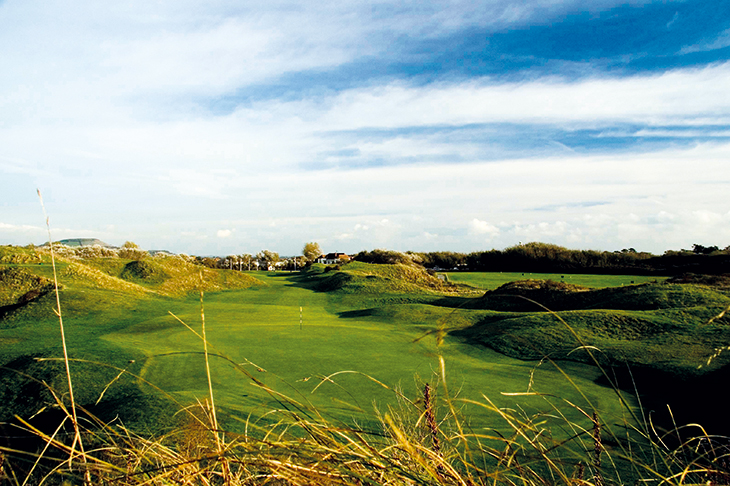
Burnham & Berrow GC
Burnham on Sea
Somerset
© Phil Inglis
In the clubhouse after the round, we were unusually quiet. Our Atlantic Coast golf odyssey was coming to an end. We’d played some of the finest golf courses in all of the UK and stayed at some of the nicest places. Each one of the golf clubs had a compelling and fascinating history and all have hosted major amateur events over the years – Open qualifying, Brabazon Trophies, etc – and continue to do so. Only logistical factors have prevented an Open being played down here. Sir Nick Faldo himself has identified Saunton as a course which would definitely have hosted the Open if it weren’t located where it is.
All of which is the Open’s loss. Next time you’re planning a golf trip, forget about Scotland and Ireland. These courses are there waiting for you right now. The Atlantic Coast is waiting for you. Golfing wonderment and a glorious adventure awaits.
More posts

How Is Your Rotation
27 Apr 2020
Rolex Oyster Perpetual Day-Date 36
23 Apr 2020
The BMW i8
22 Apr 2020
